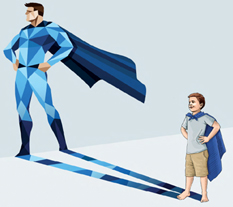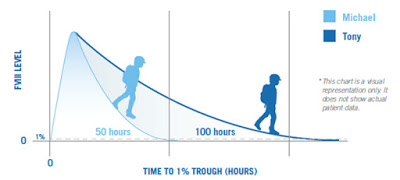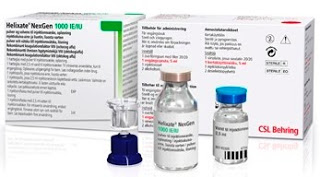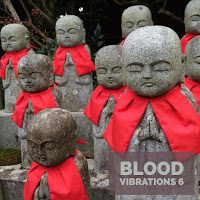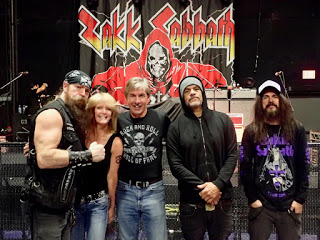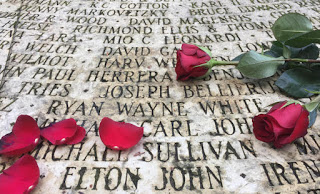Help is Coming, Victoria!
On September 20, Hurricane Maria ripped through the sunny, tropical paradise of Puerto Rico. With sustained winds of 175 mph, Maria has been classified as Category 4 hurricane, and one of the deadliest to hit the island. It’s the tenth most intense storm ever in the Atlantic region. Wind, flooding, downed power lines—the island was battered to its knees. Currently 75% of the island still lacks electricity and many residents—Americans—have lost everything. It’s an ongoing humanitarian crisis that needs our help. For those with hemophilia on the island, access to medical care and factor was cut off. Below is one VWD family’s story of riding out the storm, and the aftermath.

Victoria Pereira Figueroa is only 19 years old and lives in Canovanas San Isidro, Puerto Rico with her family. She has type 1 VWD. When they were warned of the impending twin sister hurricanes, Irma and Maria, she felt her family was well prepared for the arrival of a strong hurricane. With each “tolmentera,” thunderstorm, the family purchased water and necessity items, and prepared packages for each one. They live in a rented concrete house, which seemed very stable.
“During Hurricane Maria, my little sister Larah was very scared, so my mom decided to move us with our beds on the first floor as it seemed safer,” Victoria recounts. “At about six o’clock in the morning, September 21, when Maria lashed in her second round with all her fury, our house completely flooded filling with more than eight feet of water! We had to take refuge in a hurricane in a school that is four houses away from ours—it was very dangerous to go out. At the emergency shelter they received me, my family and even my puppy!” Victoria and her family and puppy spent two weeks in the shelter, with other families. Conditions were difficult. There was a lack of essential necessities such as water, light at night, food and a place to sleep. The
family had to sleep on the floor, with the puppy curled up tightly next to them.

The family also suffered lack of factor, and contracted several viruses that were spreading rapidly in a place lacking sanitary conditions. But the close quarters and survival conditions had one ray of light: “We were able to make good friendship,” said Victoria.
The aftermath was shocking; Victoria’s neighborhood was devastated. Her world was upended.
“Two days after the hurricane my parents went to get the floodwater out of the house and clean up. When I had the opportunity to go to my house it was very shocking for me to see what was destroyed. My bedroom was a mess, my desk was completely smashed together with all my University books and notes; everything was scattered on the floor, under the water and mud. I was very distressed to see my things like that.”
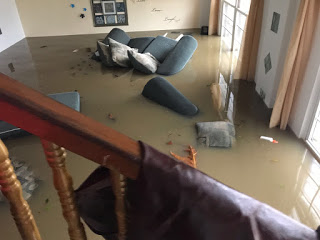
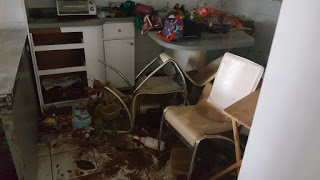
Victoria was heartbroken, but her family was safe, her puppy still by her side, and her spirit unbroken. Remarkably, she adds, “Rather than just worry about ourselves, I am trying to continue helping others in need, and I’m returning to the shelter to help the children, with games and activities like painting.” Victoria, in the midst of terror, then devastation, has still managed to find a way to give back. Her community has rallied together. Can we do the same for our hemophilia families there, from the comfort of our homes on the mainland?
Hemophilia Federation of America has a fund dedicated to raising money solely for the families of Hurricane Maria, to be given directly to them to aid in rebuilding their homes and lives. We will ensure the money will be destined in their hands and bank accounts, and we will track its usage.
Having helped impoverished families in developing countries for over 20 years, I’ve seen the promise and pitfalls of donating money. I can ensure this money will be used properly and with accountability to benefit families directly. It’s our mission and method of operating. HFA Executive Director Kimberly Haugstad and I are working together on this. Please consider donating today! We will be making trips to PR soon to deliver funds and oversee their usage.
Help is coming,Victoria!
Friends and colleagues, please go to
http://www.hemophiliafed.org/ and make a donation today!

